The Best TV Shows of 2022
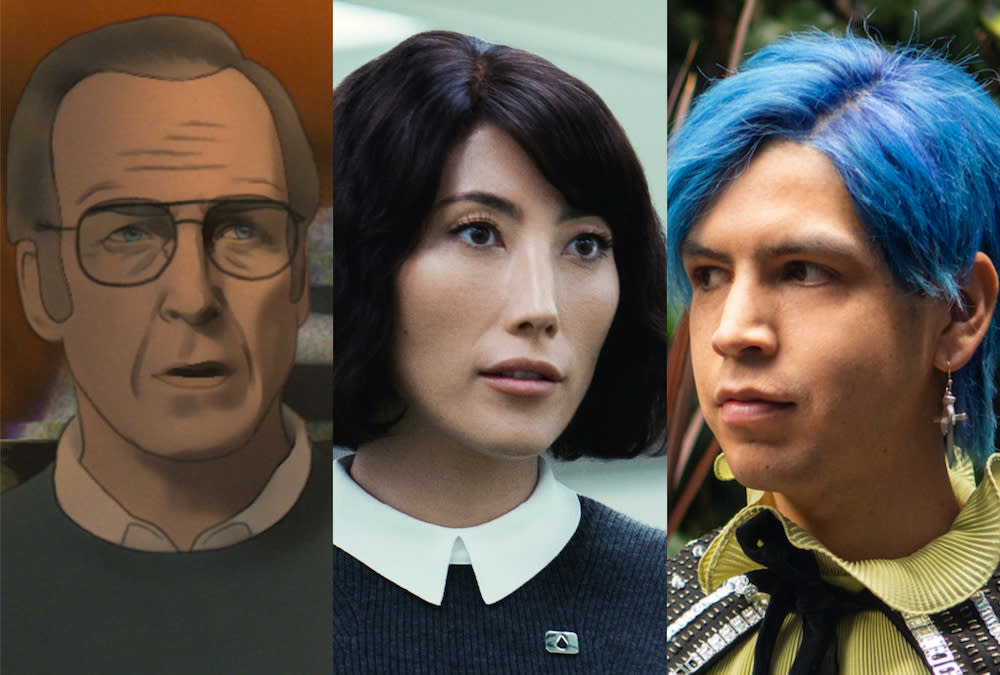
When it’s all said and done, historians may look back on 2022 as the year TV’s bubble finally burst. The industry’s collective reevaluation of streaming is already leading to tighter budgets and “moderated” spending. Networks that once competed in the originals space (like TNT, TBS, and USA Network) are now pretty much out of the game. Broadcast continues to bank on sports and reality TV. If these trends continue, the scripted TV count could recede to, well, not reasonable levels — we’re still facing hundreds of series every year for the foreseeable future — but perhaps an output that doesn’t feel quite so crushing.
Well, I’ll believe it when I see it. Despite market indicators (and semi-assurances from the Mayor of Television himself, FX’s John Landgraf), it’s hard to imagine a lighter load when you’re still climbing out from under an avalanche. 2022 is expected to set a record for scripted programming, driven in part by the COVID pandemic’s production bottleneck giving way, flooding the market with new seasons and series. (A prime example: After four years off the air, “Atlanta” released two seasons within six months.)
More from IndieWire
Where Is 'Andor's' Massive Audience? Blame Disney for Too Many Bad 'Star Wars' Stories
Is 'Yellowstone' the Next 'Law & Order'? A Hard Look at the Taylorverse and What It Means for TV
Still, on a mountain caked in snow, it becomes easier to spot the flagposts guiding you home. And in looking back over the best TV shows of 2022, one common factor became just as clear: originality. No, not “original” in the way we’ve grown accustomed to using it, where every rehashed piece of I.P. and copycat “prestige” drama still gets labeled an “original series.” True originality still stands out, whether it’s a story we’ve never heard before or one being told in an entirely fresh manner. It can pop up in a particular sense of humor, or style, or ethos. When imagination goes into overdrive, it’s a beautiful thing — made even more beautiful by its lack everywhere else.
Every entry on the following list is surprising. Some you’ve certainly heard of, and others you probably haven’t, but it’s in their nature to operate outside the norm. If you take the time to watch them, they’ll surprise you. One way or another, they’ll show you something you haven’t seen, and whether we’re in its waning days or not, that’s no small feat during the peak TV era. Hell, maybe it’s even our way out. If networks can’t bank on winning with bingeing, maybe they’ll be forced to reinvest in creativity.
Well, a critic can dream anyway.
15. “The Righteous Gemstones”
For what Danny McBride’s latest HBO comedy lacks in incisive critiques of religious hypocrisy it more than makes up for in blunt force satire. The second season sees the Gemstones — a family of wealthy televangelists with a massive following — wrestling with past sins and fresh temptations. Eli (John Goodman) is visited by old friends who remind him of bad habits. Jesse (McBride) wants to invest in a risky resort complex with fellow megachurch preacher, Lyle Lissons (Eric Andre). Kelvin (Adam Devine) leads a cult-like bodybuilders camp on the verge of an un-cult-like revolt, while their sister Judy (Edi Patterson) works through a few unexpected hiccups with her new husband, BJ (Tim Baltz).
With a talented cast working within these outlandish characters, “The Righteous Gemstones” has plenty of guaranteed comedy built in, but Season 2 pushes everything to be bigger. Eli’s bottled up rage isn’t just a cute old hiccup; it can be scary. Jesse’s ambition isn’t fixated on any one thing; it’s unchecked and quite possibly unending. Kelvin’s campers create challenges that would crush anyone of average size, and Judy’s marriage issues culminate at a baptismal celebration to end all baptismal celebrations. Under the direction of David Gordon Green and Jody Hill, there’s enormity to the sets, the effects, the costumes, and everything else. Such magnitude adds real weight to a black comedy that’s already in your face, making its characters’ go-for-broke choices all the more hysterical.
Read IndieWire’s original review of “The Righteous Gemstones.”
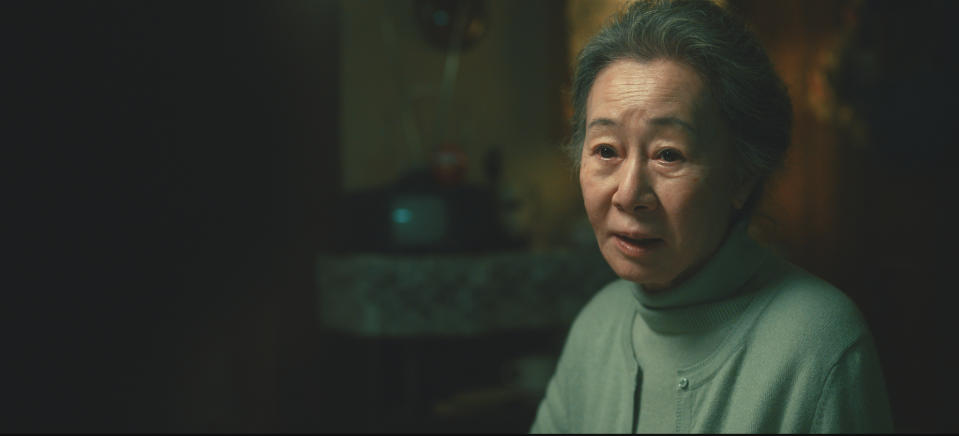
Courtesy of Apple TV+
14. “Pachinko”
Sweeping romances spanning time and space may be a tried-and-true staple of entertainment, but rarely can they sustain the intimacy and sense of discovery evident throughout “Pachinko.” Adapted from Min Jin Lee’s 2017 novel of the same name, the sprawling Apple TV+ drama centers itself around Sunja Kim and three generations of her family. One arc starts in the 1920s, when Sunja (played by breakout Minha Kim) meets a handsome, besuited businessman (Lee Min-ho) who changes her life forever. The second storyline takes place in the 1980s, when Sunja is now a grandmother (played by Oscar winner Youn Yuh-jung), her son (Soji Arai) runs a pachinko parlor to support them, and her grandson, Solomon (Jin Ha), is a businessman with lofty ambitions to succeed in the West. When we meet the Yale-educated young man, he’s lost a promotion in New York and, desperate to impress his prejudiced bosses, he pitches moving back to Japan to close a deal he’s confidant only he can complete.
His return home starts tying together the timelines, as his reunion with his father and grandmother — as well as his attempts to finalize the deal and a lengthy search for a missing woman from his youth — create an impetus to understand the past more thoroughly. Bouncing like a game piece between Sunja and Solomon’s distinct yet overlapping maturations, “Pachinko” explores how families and cultures are affected by colonialism through the compelling, deeply personal stories of each character. Showrunner Soo Hugh establishes an easily traced structure that allows episodes to spend extra time in varied perspectives, and in the season finale, Hugh makes a bold choice to connect her fictionalized narrative with real Zainichi women, who reflect on their relocation from Korea to Japan. “Pachinko” is incredibly ambitious, well-acted, and impeccably designed. (“After Yang” director Kogonada helms half of the first season.) Even with a few momentary lapses among the many delicate story threads, there’s more than enough collective resonance to keep you thinking about its strongest moments for months, perhaps years, to come.
Read IndieWire’s original review of “Pachinko.”
13. “Hacks”
For a second, it seemed like “Hacks” Season 2 was so good it broke television — or, at least, it broke viewers’ ability to properly process television. Without getting into spoilers, Lucia Aniello, Jen Statsky, and Paul W. Downs’ Emmy-winning HBO Max comedy wraps in deceptively satisfying fashion. Many of the characters reach long-sought personal or professional goals. Fraught relationships are solidified, and key partnerships are dissolved. Laughs are had, closure is given, and goodbyes are shared. This is what an ending looks like, and many quickly assumed the Season 2 finale was actually a surprise series finale.
…except of course it’s not. HBO Max renewed “Hacks” in mid-June, just two weeks after its last episode premiered, but the intent to continue was established in the story all along. “Hacks” is built around its two stars, Deborah Vance (Jean Smart) and Ava Daniels (Hannah Einbinder), and no matter what happiness is found elsewhere in their circle of friends and family, the lingering dissatisfaction shared by our central couple makes it clear they have more work to do — with each other and on themselves. (Deborah, in particular, ends the season making a defensive choice stemming from years of requisite self-sufficiency — a way of life that may finally be growing lonely.)
Beyond the instinctual fear of a favorite show shutting down so soon, what audiences were responding to was really just great writing. Seasons should provide closure. There should be evident growth (or regression) for characters, and various arcs sustained over multiple episodes should reach a resolution (even if that resolution sets up more story next season). “Hacks” Season 2 is exceptionally crafted — perhaps too well crafted. But we wouldn’t want it any other way.
Read IndieWire’s original review of “Hacks.”
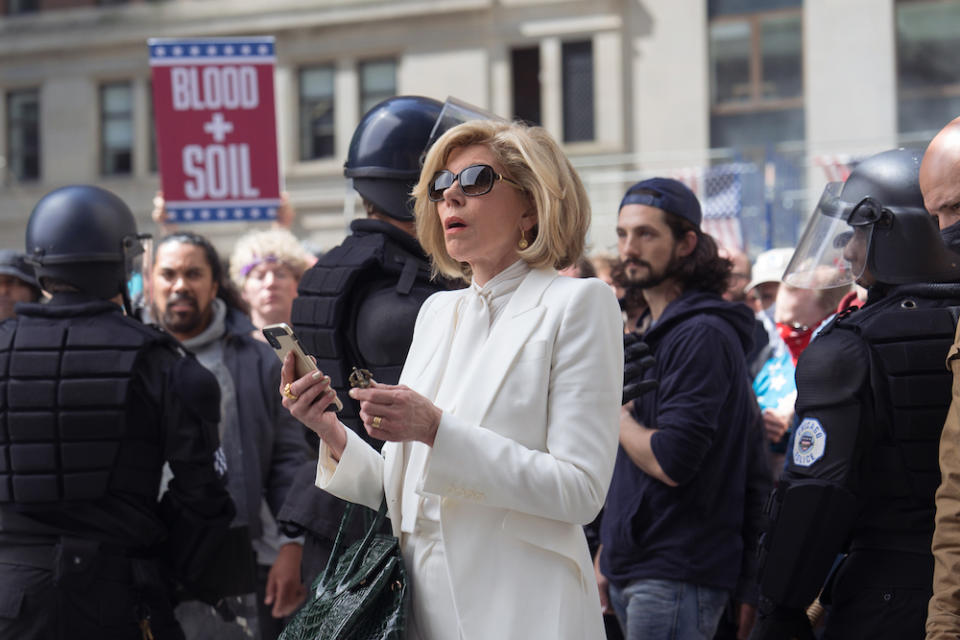
Elizabeth Fisher / Paramount+
12. “The Good Fight”
Some great shows need to end. Others feel like they never should. “The Good Fight,” in case its inspiring title doesn’t give it away, falls into the latter camp. Robert and Michelle King’s spinoff to “The Good Wife” hit its stride early and just kept pushing forward — through cast turnover, network turnover, cultural turmoil, and years of unjust Emmy snubs. (The CBS All Access original that became a Paramount+ series netted just two nominations over six seasons.)
If anything, such challenges only made “The Good Fight” stronger. The series started with a rude awakening — beyond Trump’s election — forcing Diane Lockhart (Christine Baranski) to put off retirement and put her righteous anger to good use. For years, she did just that alongside an expansive team of strong personalities, but over the most recent few seasons, a relatable fear settled in: What’s it all for? Why fight so hard if the other side is cheating its way to the top? Why fight so hard when it feels like so little changes, or worse still, things are moving in the wrong direction? And finally, for a well-off attorney like Diane, why fight so hard when you don’t have to?
Rather than fall back on truisms or old answers, the Kings kept pushing for relevant reasons to go on — Diane, along with Liz Reddick (Audra McDonald), Marissa Gold (Sarah Steele), Jay DiPersia (Nyambi Nyambi), and many more key figures of their Chicago-based law firm tackled topical issues every week, confronted madness with as cool a head as possible (remember: they’re lawyers), and always considered every angle they could. With a sly sense of humor (again, they’re lawyers) and impeccable guest stars, “The Good Fight” went out even better off than it began. As the final minutes ticked away, all I could do was wish for one more episode, one more season, one more series. Even if the “Good” trilogy never comes to pass, the spirit of “The Good Fight” will carry on.
Read IndieWire’s series finale interview with “The Good Fight” creators.
11. “Atlanta”
After years away, “Atlanta” returned with the two-for-one deal of 2022. Season 3 (which premiered in March) continues the FX Emmy winner’s extended departure from its titular city, as Alfred “Paper Boi” Miles (Brian Tyree Henry), Earn (Glover), Darius (Lakeith Stanfield), and surprise tag-a-long Van (Zazie Beetz) encounter various surprises, commonalities, and surprising commonalities while touring Europe. It turns out entitled fans, unchecked racism, and confounding hypocrisy are alive and well, even outside the United States, as the team navigates thoughtless holiday celebrations, deceptive decoy houses, and corporate cultural appropriation. But Season 3 also takes notable time away from its regular cast, telling thematically relevant but narratively independent stories about reparations, exploitation, and identity. Combined with a consistent focus on whiteness, these breakout episodes rubbed some viewers the wrong way, but Season 3 remains a fascinating exploration unto itself — a journey that’s very much about the experience, rather than the destination — and TV needs more shows with similar courage, conviction, and comedy.
Then came Season 4, a mere six months later. With the group back in the ATL, their focus shifted from exploration and experimentation to thoughts of the future and what it may take to get there. Alfred, who’s long been haunted by the loss of his mother, confronts death at every turn — whether he’s dodging bullets at the mall or fighting off feral pigs at his farm. Van wrestles with her role in Earn’s life (as well as her responsibilites to herself and her daughter), while Darius just tries to keep his grip on reality. Earn, fittingly, goes through the most: attending therapy, regressing in grand fashion (see: “The Homeliest Little Horse”), and recommitting to his mental health. Over the last few episodes, Earn is making major moves, but “Atlanta” isn’t intent on wrapping things up in a neat little bow. To the end, the groundbreaking sitcom pushes itself into fresh territory, never settling for the easy answer. The surreality of being Black in America hasn’t let up, so why would the show that captured the experience so vividly?
Read IndieWire’s series finale review of “Atlanta.”
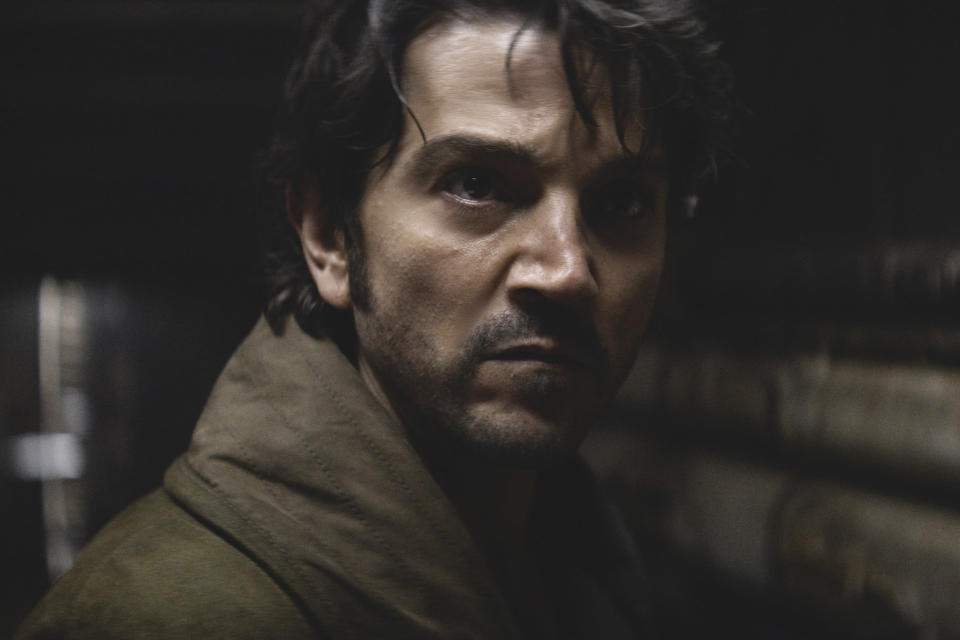
Lucasfilm Ltd.
10. “Andor”
In a fall overflowing with blockbuster prequels, the best of the batch — and yes, one of the best shows of the year — came from the unlikeliest source. “Star Wars” has had a rough go under Disney. The sequel trilogy managed to create one elite offering, only to erase as much of it as possible in favor of an utterly abysmal ending. Spin-off films flopped, and live-action TV shows squandered too many opportunities. Nostalgia ruled the galaxy, and fresh ideas felt all but outlawed.
Then came “Andor.” A prequel series to a prequel film, Tony Gilroy’s two-season limited series smacked of more of the same: more filling in the blanks between meaningful stories, already told; more forced cameos from the franchise’s glory days; more digital sets that feel as empty as the light creating their mock mise en scene. Instead, “Andor” roots its burgeoning rebels in thrilling, emotionally charged scenarios; it introduces distinct new faces to a world that suddenly feels as expansive as a galaxy again; and its rigorously crafted props and practical effects grounds the Rebellion in a relatable reality — one that speaks to an era eager for its own revolution. “Andor” makes “Star Wars” feel relevant again. More blockbusters should follow its lead, and shoot for the stars.
Read IndieWire’s in-depth analysis of “Andor’s” direction and design.
9. “Better Things”
A simple list of events depicted in “Better Things” should be more than enough to bring a smile to your face — even for those who’ve yet to appreciate Pamela Adlon’s endearing, empathetic ode to motherhood, family, and finding the joy in life’s everyday offerings.
In one episode, Sam (Adlon) cooks borscht. In another, she and her brother page through their family’s ancestry. She shoots a sitcom episode starring an overacting child. Weddings, funerals, trips — the final season has them all. Enticing situations are integral to great sitcoms, and “Better Things” knows how to bring out the best in each of them. Paired with Adlon’s observant, caring eye and appreciation of character-defining details, FX’s gem springs to life, each and every episode. But to call “Better Things” loose or exploratory doesn’t do justice to the sound emotional structure guiding Season 5’s arc. Themes are thoroughly explored. Seemingly insignificant beats connect to form a resounding rhythm. While easily enjoyed from scene to scene, Adlon blends episodic and serialized storytelling through stitched together vignettes rooted in deeply felt visual, audible, and felt logic.
Those revisiting the series can drop in on any episode or any scene and find moments to enjoy. Or they can start from the beginning and discover layer after layer that builds to a moving, virtually unavoidable, yet wholly original ending. “Better Things” is great from the granular to the big picture and back again. Don’t let it drift away.
Read IndieWire’s original review of “Better Things.”
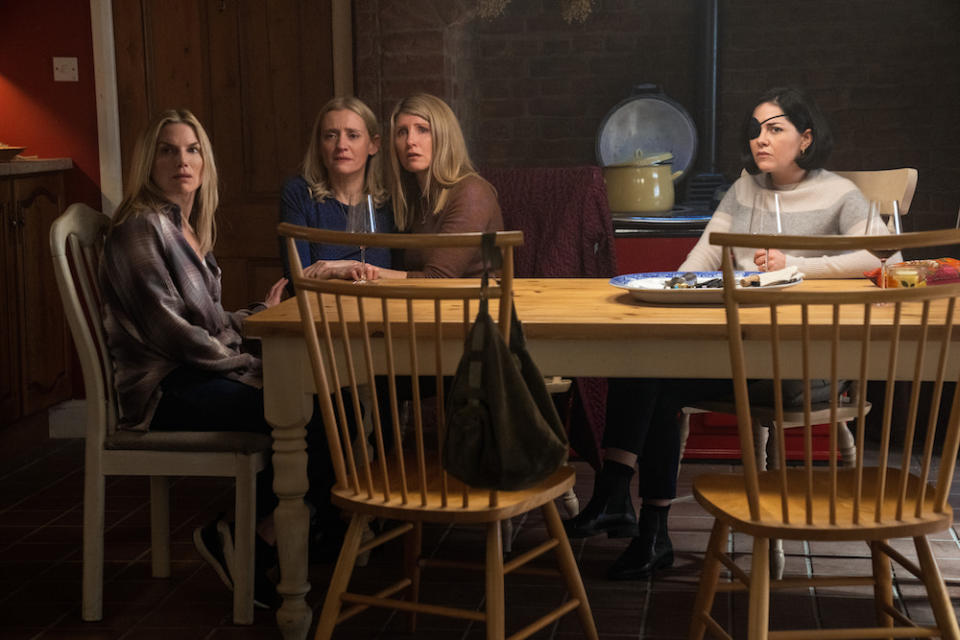
Natalie Seery / Apple TV+
8. “Bad Sisters”
Sharon Horgan, Dave Dinkel, and Brett Baer set themselves a near-impossible challenge when it came to making “Bad Sisters.” Adapted from the 2012 Flemish series “Clan,” the 2022 Apple TV+ black comic mystery aimed to do three things: 1. Create a toxic male antagonist whose villainy is wide-ranging enough to illustrate many men’s worst behaviors, yet he’s still believable as a single, loathsome individual. 2. Force audiences to consider what it would take for them to commit murder — not in a hypothetical scenario, but in the reality of personal morals and societal consequences. 3. Have fun.
Hot damn if they didn’t pull it off. Told in two timelines, “Bad Sisters” follows five siblings, two insurance investigators, and the world’s worst brother-in-law. Half the season unfolds as Eva (Horgan), Ursula (Eva Birthistle), Bibi (Sarah Greene), and Becka (Eve Hewson) debate whether to kill John Paul (Claes Bang), their sister Grace’s emotionally and physically abusive husband. There’s no trick to what they decide, given the other half of the season takes place after John Paul is dead and the life insurance agents tasked with paying out his claim start looking into how he died. But who did it, how, and ultimately why are all critical questions given their proper due in this engrossing, smart, and addictive mystery. Bang does a convincing job embodying a treacherous individual, grounding his appalling choices in a relevant mix of white male entitlement and inherited personal issues. Each of the sisters is given ample motivation for their involvement in getting rid of him, and Horgan’s gift for biting dialogue and situational comedy help elevate episodes into a stratosphere of fun I wouldn’t have thought possible.
Ultimately, “Bad Sisters” shouldn’t work, and viewers who can’t get on its wavelength may find themselves nitpicking plot holes, questioning whether this or that would really happen. While an understandable reaction to anything as purposefully provocative as this — a show about how women can and should fight back against flesh-and-blood manifestations of the patriarchy — such criticism also misses the forest for the trees. “Bad Sisters” aims high, and for the right reasons. That it’s as entertaining as it is incisive is a testament to just how often its creators hit their targets.
Read IndieWire’s original review of “Bad Sisters.”
7. “Los Espookys”
Even after two seasons living in its wild, glorious world, HBO’s official synopsis for its first Spanish-language comedy series leaves me baffled. “[A] comedy following a group of friends who turn their love for horror into a peculiar business, providing horror to those who need it, in a dreamy Latin American country where the strange and eerie are just part of daily life.”
“A comedy”? Yes, absolutely. Created by Ana Fabrega, Julio Torres, and Fred Armisen, the half-hour sitcom is loaded with laughs, both absurd and astute. Fabrega’s character, Tati, drops the most outrageous one-liners with an impossibly straight face, while Torres’ spoiled heir to a chocolate empire is routinely draped in gasp-inducing outfits. Together with team leader Renaldo (Bernardo Velasco) and Tati’s responsible sister Ursula (Cassandra Ciangherotti), each episode is stacked with beguiling turns of phrase and unforgettable physical comedy.
Their “dreamy Latin American country” filled with “strange and eerie” events is also abundantly clear. Human reflections spring to life, straight out of their mirrors. The moon is a person, and not just any person, but a sparkling Mexican millennial played by “Roma” Oscar nominee Yalitza Aparicio. Visions of floating water demons and beauty contestants impaled by an anchor are part of daily life. No, the phrase that sticks with me from the synopsis, that I revisit every time I think about this endlessly creative endeavor, is the core of “Los Espookys”: “a peculiar business providing horror to those who need it.” Never in my life had I thought that anyone would need horror — maybe in the context of horror films or TV shows, but even then, “need” seems like a strong word. Yet each gig the Espookys land illustrates not only the client’s need for imaginative horror scenarios, but everyone’s. Cooking up each plan, each monster, each element that brings about an immersive horror experience is an exercise in creative excellence, providing whatever is asked of the characters and giving the audience of this HBO gem so much more in return. “Los Espookys” worships at the altar of artistic ambition, and it more than earns our baffled appreciation of the very same.
Read IndieWire’s Season 2 review of “Los Espookys.”
6. “Better Call Saul”
With “Better Call Saul,” the end is only the beginning. Since the start, Peter Gould and Vince Gilligan’s “Breaking Bad” prequel has been tracking Jimmy McGill (Bob Odenkirk) as he transforms into Saul Goodman — the sleazy, strip mall lawyer utilized by Walter White (Bryan Cranston) and Jesse Pinkman (Aaron Paul). His devolution has been as nuanced as its motivations are unexpected, even if seeing the con man become a licensed attorney isn’t all that different from watching a snake shed its skin. The questions lingering over “Saul’s” final season aren’t exclusive to one man. What about Kim (Rhea Seehorn)? What fate awaits Saul’s wife and chief conning collaborator? Where has she been during those five seasons, and what does that mean for what’s next? Perhaps the most pertinent question of all is also the simplest: What does it cost them? Are all their moral compromises, sneaky scams, revenge plots, and more stick-it-to-the-man stings really as little, as petty, as insignificant, as the grifters perceive them to be?
“Better Call Saul’s” magnificent ending takes into account these questions and more, as Gould and Gilligan steer their character study through the past and into the future (which, even after “Breaking Bad,” is still the past). Heartbreaking and thrilling, profound and straightforward, the final season embodies a series that grew into an essential, one-of-a-kind experience week in and week out. Jimmy. Kim. You will be missed.
Read IndieWire’s series finale review of “Better Call Saul.”
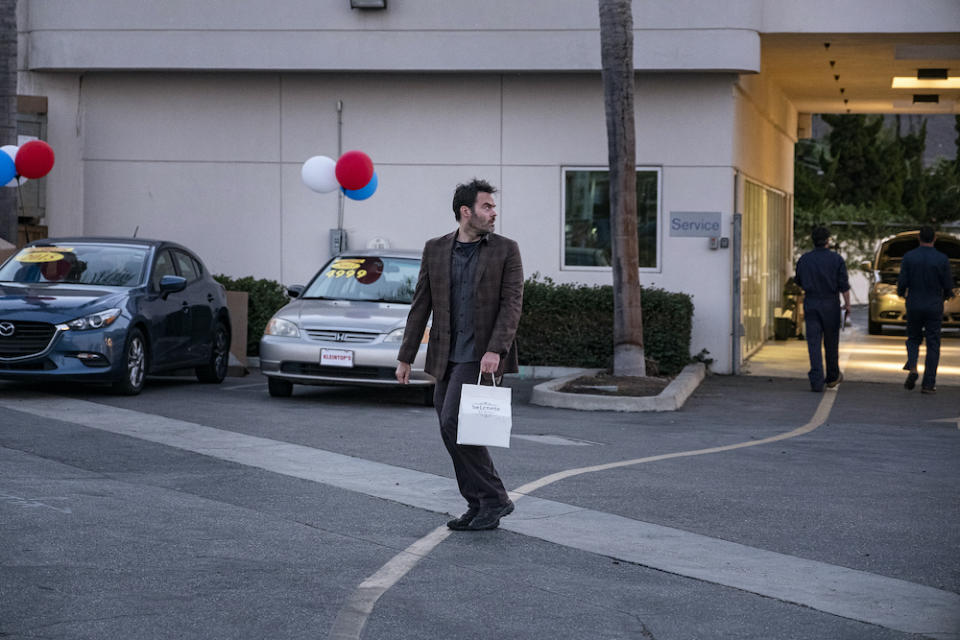
Courtesy of HBO
5. “Barry”
Bill Hader and Alec Berg’s black comedy circles a particularly difficult question: When your moral center has been torn asunder, how do you find it again? Can you? Ever?
In Season 3, Barry (Hader) finds no easy answers. Thrown into an emotional pit after relapsing in Season 2 (when he kills a monastery full of armed men in a furious search for his backstabbing handler, Fuches), Barry is adrift: He’s taking on random assassination gigs off the internet. He’s not shaving, or bathing, or looking for a way out. He’s accepted that there’s no forgiving himself for what he’s done, and the rest of the world shouldn’t be forgiven either. So why not off a few fellow losers and make a few extra bucks?
The motivation and means with which he crawls back toward hope are as unpredictable as viewers have come to expect from Hader and Berg’s sneaky action-comedy, but what remains most impressive about the series — beyond how it addresses Hollywood’s dark side and the oddities of the industry overall — is that “Barry” is always, always funny. Gene Cousineau (Henry Winkler) is fleeing for his life? OK, well let’s watch it through a window of a house where a couple is breaking up (and for a very specific reason). Is Sally (Sarah Goldberg) losing her dream job and everything she’s worked so hard to accomplish? Yes, sure, but what if it’s because of an algorithm that refutes all common sense? And so what if NoHo Hank (Anthony Carrigan) is experiencing the cruelest, most terrifying trauma of his fairly violent life? We can still nab a few nervous laughs with our extreme sound design and Carrigan’s committed performance.
“Barry” defies expectations in the best possible ways, which only better serves a show asking such impossible questions. It gives us all the more reason to believe a satisfying resolution is coming, even when Barry can’t see it himself.
Read IndieWire’s interview with the “Barry” creators.
4. “Undone”
A remarkable accomplishment. The first season of Kate Purdy and Raphael Bob-Waksberg’s rotoscope-animated family drama follows Alma (Rosa Salazar) as she digs through her past to discover the truth about her father’s death. The twist: Her dad, Jacob (Bob Odenkirk), is helping her do it. Yes, he’s dead, but the father-daughter duo have discovered a way to travel through time together, working their own memories like a mystery, with Jacob’s life hanging in the balance. During their journey, unwanted discoveries alter the present, Jacob’s misaligned priorities are exposed, and Alma’s lasting connection to her father is investigated. How his decisions in the past influence her choices in the present frame a story of parental influence and personal responsibility that crescendos in a question: Is it too late to save them both?
Season 2 returns not with the answer but an answer, while pivoting its focus from Alma’s father to her mother. The time-traveling template is tweaked as she and Jacob again go searching through the past, only this time, it’s to better understand Camila (Constance Marie) — and they’ve got a little extra help from Alma’s sister, Becca (Angelique Cabral). With these shifts, Purdy and Bob-Waksberg show great awareness, dialing up elements that worked well in the first season while expanding on the same themes and ideas still rich for exploration. Intergenerational trauma, self-imposed sacrifice, unknown connections — they all play a role in a story that’s both vast and intricate, while remaining propulsive and thrilling. In the end, “Undone” is rich and satisfying… while still leaving audiences wanting more.
Read IndieWire’s original review of “Undone.”
3. “What We Do in the Shadows”
A few days before sitting down to write this list, I received an unexpected email from the company attorney. It turns out, per IndieWire bylaws, any television critic designated with ranking the year’s best shows must include any program that casts the three following people: Tilda Swinton, Jim Jarmusch, and Sofia Coppola. Apparently there are 12 other names that trigger a similar requirement (she wouldn’t give me the full list, but did hint that Seth Rogen is one of them), but these were the only applicable individuals for my upcoming task.
Luckily, “What We Do in the Shadows” had already earned its placement on merit alone. Beyond bringing in Ms. Coppola and Mr. Jarmusch for memorable cameos, Season 4 offered inspired idea after inspired idea throughout its 10-episode run. A vampire nightclub? Why not! A “Property Brothers” parody episode? Let’s see it! Mark Proksch playing a baby, small child, and angsty teen over the course of a single year? Absolutely! Describing the bat(!)shit ideas driving “What We Do in the Shadows” always makes the series sound completely off its rocker, but that’s part of the fun. Showrunner Paul Simms, his amazing writing staff, Emmy-winning costumers, meticulous production designers, and all-around incredible crew have an immense amount of fun stitching together every out-there proposal and their even weirder results. That fun is then passed onto the viewer and amplified over time, as a classic sitcom structure helps endear these dorky vampires to their growing fanbase each week.
“What We Do in the Shadows” may appear random, haphazard, and even unhinged. (Did I mention that Coppola gets decapitated?) But orchestrating all this splendid insanity is an exercise equal parts love and discipline. “Shadows” would’ve never made it this far (or made this list) without the attentive discretion of brilliant comic minds — minds that can recognize “Yeah, sure, a Sofia Coppola cameo is funny… but what if we ripped off her head?”
Read IndieWire’s feature on how “What We Do in the Shadows” created its impeccable Season 4.
2. “Severance”
Midway through 2022, “Severance” topped IndieWire’s list of the year’s best shows (so far), and if not for a certain Canadian mastermind, it very well could’ve held onto the No. 1 slot. Dan Erickson and Ben Stiller’s accomplished corporate thriller caught fire on Apple TV+ with good reason: Built on an enticing, light sci-fi premise — if you could separate your work and non-work memories, would the sacrifice be worth it? — and featuring a stacked cast (Adam Scott, Patricia Arquette, John Turturro, Christopher Walken, Britt Lower, Zach Cherry, Jen Tullock, and Trammell Tillman), “Severance” thrust viewers into a world both familiar and unique. The corporate trappings of Lumon Industries are specific to its fanciful, fictional history (complete with demigod founders and peculiar reward programs), but each oppressive policy and arbitrary order from above carries an eerie, infuriating connection to the real world. Much like “Andor” encouraged an uprising in a galaxy far, far away, “Severance” works to shatter the frosted glass separating employees from their employers. But don’t take our word for it — take our words for it. IndieWire’s mid-year essay on the visceral relationship “Severance” forms with fans can be found right here.
Read IndieWire’s interview with “Severance” creator Dan Erickson and director Ben Stiller.
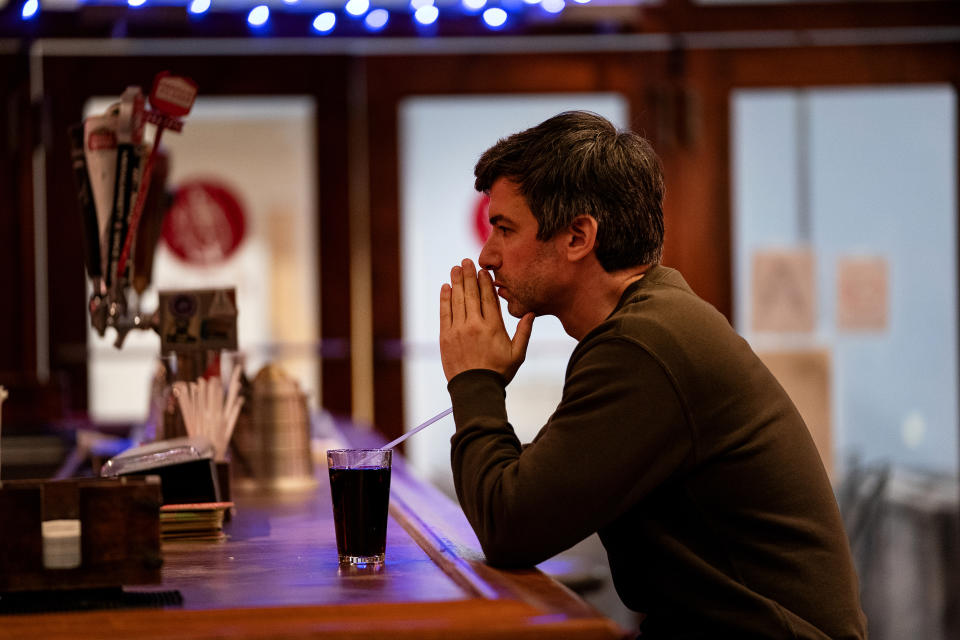
Allyson Riggs/HBO
1. “The Rehearsal”
What’s left to say about Nathan Fielder’s absurdly ambitious HBO docu-comedy? Shrouded in secrecy and released to an excitable summer crowd, “The Rehearsal” immediately turned heads with its surprising twists, savvy construction, and deep, full-throated laughs. Fielder, as himself, embarks on a journey to help people prepare for any number of life’s daunting challenges. His method? Create the scenario they’re afraid of so they can rehearse every possible iteration before going through it for real. To Fielder, rehearsals are a comfort; they help eliminate social miscues that he believes can alienate would-be friends. “I’ve been told my personality can make people uncomfortable, so I have to work to offset that,” Fielder says in the premiere. “Humor is my go-to instinct, but every joke is a gamble.”
Even though his bets pay off big time over six hilarious episodes, Fielder’s fear is what gives “The Rehearsal” its emotional foundation. As his rehearsals become more and more elaborate, what keeps the series from spinning out of control (or coming across as nothing more than a very expensive gag) is Nathan’s motivation. He wants this process to work because he wants to feel more comfortable in his own interactions. This is a man who’s gone through a divorce, who doesn’t do a lot of interviews, who mainly engages with the world through his art — sure, between this and “Nathan For You,” his work has resonated far and wide, but that doesn’t mean his day-to-day existence isn’t lonely. And much like the incessant question asked of the series — “Is it real?” — the truth doesn’t really matter. “The Rehearsal” is a TV show. Fielder is either playing himself or a character. Either way, your investment should be the same, because all we know is what he’s told us. Why not treat it like any other series, and grapple with what’s onscreen?
After all, there is plenty. “The Rehearsal” invites broader discussions about what it takes to know yourself, how to make crucial decisions, and who to trust along the way. It can also be seen as commentary on reality TV production and culture, as well as our recent obsession with gamifying life. That it can also be a funny anthropological experience with epic lines and unforgettable characters only shows just how thoroughly “The Rehearsal” has been built. No matter why you watch, you’ll be rewarded. Bring on Season 2.
Read IndieWire’s series finale review of “The Rehearsal.”
Honorable Mentions
Best of IndieWire
The Best True Crime Streaming Now, from 'Unsolved Mysteries' to 'McMillions' to 'The Staircase'
'The Last of Us' Sets Early 2023 Release at HBO: Here's Everything You Need to Know
From 'Reality Bites' to 'Fatal Attraction,' Keep Track of All the Upcoming Film-to-TV Adaptations
Sign up for Indiewire's Newsletter. For the latest news, follow us on Facebook, Twitter, and Instagram.

 Yahoo Movies
Yahoo Movies 

